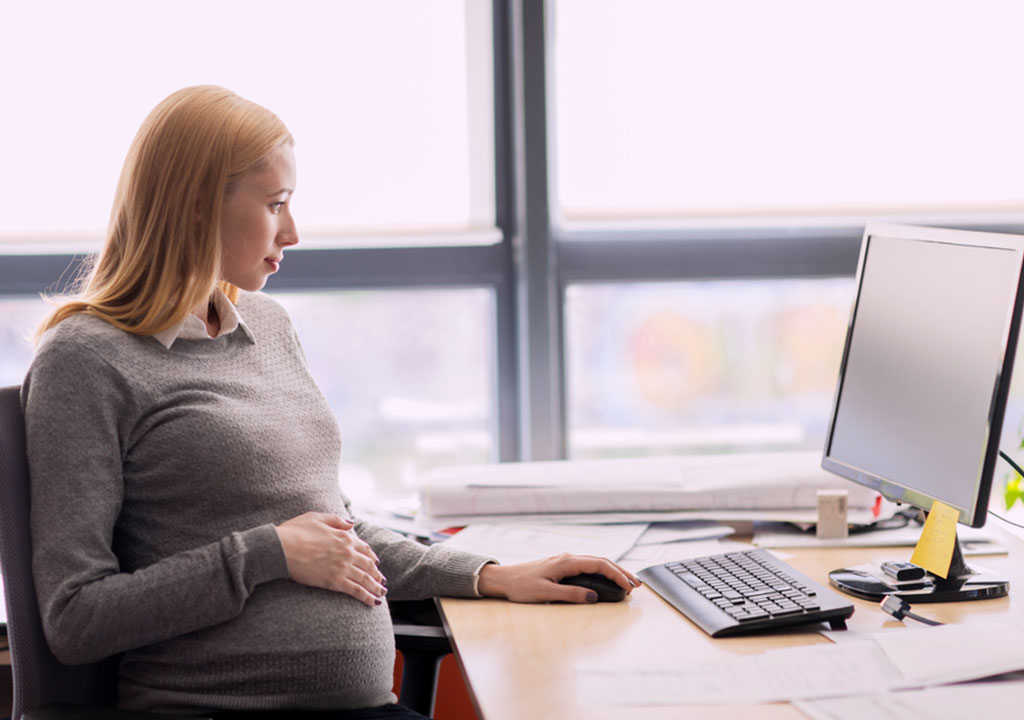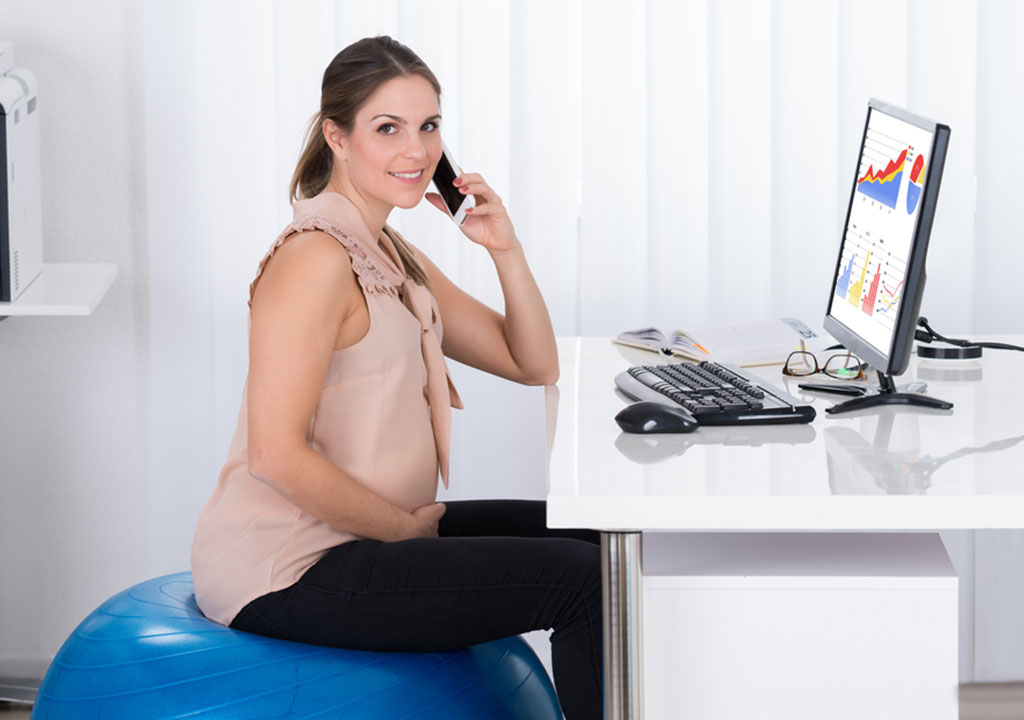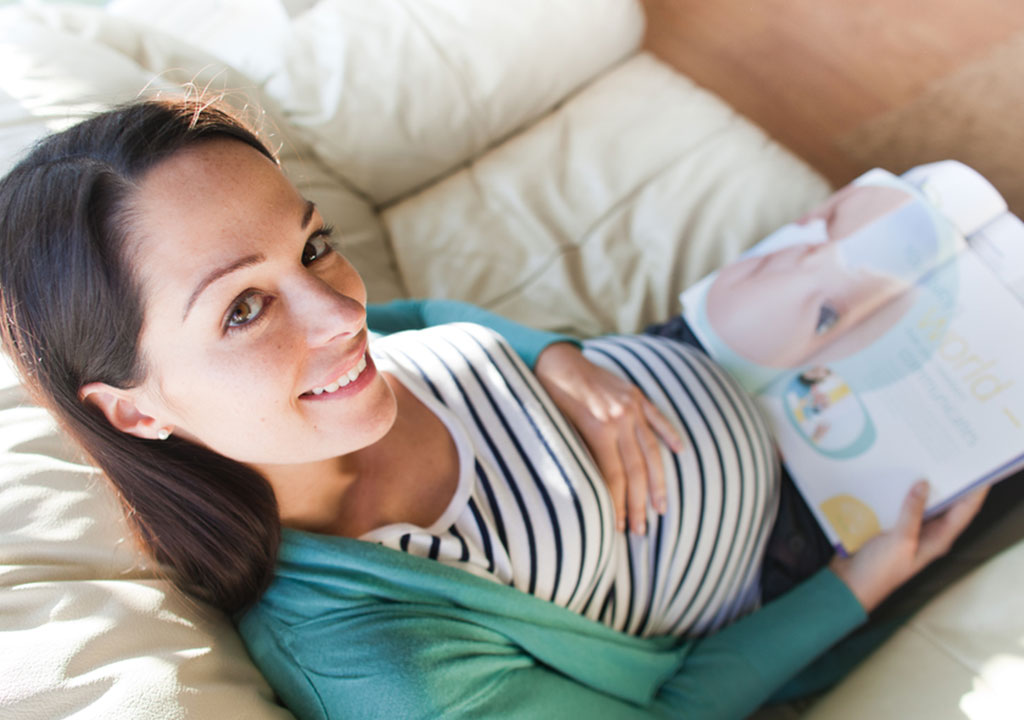In this Article
Pregnant women can often be heard complaining about pain in their back, neck and shoulders. This body pain is usually experienced because of drastic changes in one’s posture during pregnancy. If you are pregnant, simple tasks, such as standing and sitting can prove to be difficult for you because of weight gain. But contrary to popular belief, it’s not difficult to find a good standing and sitting position during pregnancy.
Importance of Good Posture During Pregnancy
Good posture is when your body aligns properly while sitting, standing, or lying down. Simply put, it is the habit of standing and sitting up straight. A good posture is essential for good health. But its importance increases manifold during pregnancy. A wrong posture may not only lead to aches and discomfort but may also cause harm to the baby or lead to injuries. In the final stages of pregnancy, this pain can deepen as hormones start softening the ligaments and tendons in the joints. During this time, one is more prone to overstretching or straining themselves while performing normal day-to-day jobs. A poor posture during pregnancy may cause complications and irritated joints even after the delivery. It may adversely affect bodily functions like digestion and breathing as well. Therefore, it is essential to maintain a good posture throughout the pregnancy to ease the tension in your back, shoulders, neck and hips. But a good posture will aid the baby to establish himself into the proper birthing position.
Right Sitting Positions

It is important to adopt the right sitting positions during pregnancy to ease discomfort and reduce the stress on the spine. These simple tips may show how to sit during pregnancy:
- While sitting, your back should be straight and your shoulders pulled back and rolled down. The buttocks should touch the chair’s back.
- Place your feet evenly on the floor. The knees and hips should be set at 90 degrees. The pelvis should be aligned by slightly leaning it forward. The ears should be directly in-line with the shoulders, which should be in-line with the hips.
- Select a hard, straight-backed chair to sit on. A soft pillow or a small rolled-up towel may be placed behind the lower back (at the curve of the back) for additional support.
- Keep a footstool to elevate the feet. This further eases the strain on the lower back. If you don’t have a footstool, make sure you sit on a chair that is low enough for you to put both your feet evenly on the floor.
- If sitting for long, you can do simple foot exercises to increase circulation and to avoid cramps.
- Whenever standing up from a sitting position, slide to the edge of the chair and raise yourself by straightening your legs. One must resist the temptation of bending forward at the waist.
- If you are required to sit for long hours at your workplace, remember to get up and walk around for a few minutes at regular intervals.
- At the workplace while sitting at your desk, adjust your chair height so that you are levelled with the table. Sit close to your desk so that you can rest your arms and elbows on the table or chair. This will help relax your shoulders.
- Another good sitting position can be to sit at the edge of the chair and slouch fully. Then raise yourself up and heighten the curve of your back as much as you can. Hold on for a few seconds. Slightly relax the position (about 10 degrees). Make sure to evenly distribute the weight of your body on both hips.
- Using a balance ball as a sitting position during the third trimester of pregnancy may be beneficial. But make sure to buy one which is right for your height. It may aid in preparing your pelvis for labour and even help in the right positioning of the baby.
- When you sit on the floor, you can sit in cobbler’s pose. Sit straight up with your knees bent and your heels joined together.

Sitting Postures to Avoid While Pregnant
Paying special attention to your postures during pregnancy is important. Here are some of the sitting postures that should be avoided during pregnancy:
- Refrain from crossing your legs while sitting. It may cause bad circulation, swelling of the ankles, or varicose veins.
- Whenever you need to turn, avoid twisting at the waist. Instead, it is advisable to turn your entire body. Also, refrain from bending forward. This may put abnormal pressure on the abdomen.
- Avoid sitting for long or in the same position. Sit only for a short span of time (10 to 15 minutes) and remember to adjust and change positions regularly.
- It is best to avoid slouching even though it may feel comfortable.
- Avoid sitting with your legs hanging. This can lead to swelling with increased blood flow to the legs.
- During pregnancy, avoid sitting on a stool or a chair without a backrest. This can place an unnecessary strain on your back.

Proper Standing Postures
Maintaining proper standing postures are as crucial as sitting positions. The following things should be kept in mind for standing while pregnant.
- Your head should be held up straight; it should not be tilted.
- It is advisable to keep the chest forward and shoulder blades pulled back.
- The earlobes should be aligned with the middle of your shoulders.
- Avoid locking the knees by keeping them straight.
- Refrain from tilting the pelvis forward or backwards. It is advisable to keep the buttocks tucked in, and stomach muscles pulled in when able.
- Your feet should be positioned in the same direction and evenly balance the weight on both feet. Low heel shoes (not flat shoes) may be worn to support the foot arches.
- It is recommended not to stand for a long duration of time.

How to Stand Up From the Lying Position
If you want to stand up from the lying position, turn on to one side on the bed, draw up your knees close, and move your legs to the bed’s side. Try to sit up by pushing yourself up with your hands. Do not bend while trying to stand.
It is important to find out and maintain proper standing and sitting positions throughout the pregnancy to minimise pain and discomfort. This will make your pregnancy journey a bit easier and comfortable!









